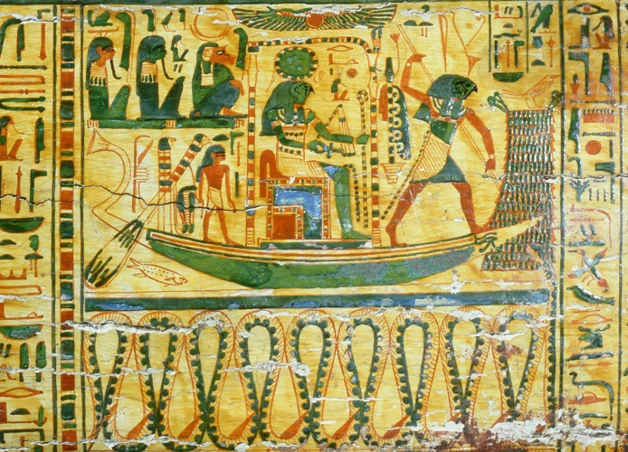The Cosmic Beliefs of Ancient Egyptian Civilization: Unveiling the Mysteries of the Cosmos. The ancient Egyptians were a civilization deeply connected to the celestial realm. Their beliefs and rituals were centered around the cosmos, and their understanding of the universe shaped their entire way of life. From the creation story to the worship of celestial entities, astrology, and the construction of temples, the Egyptians saw the cosmos as a powerful force that influenced every aspect of their existence. Join us on a journey as we explore the intricate cosmic beliefs of this ancient civilization and uncover the profound impact they had on history. Prepare to be amazed by the wisdom and insight of the ancient Egyptians as we delve into the wonders of their cosmic beliefs.
The Role of the Cosmos
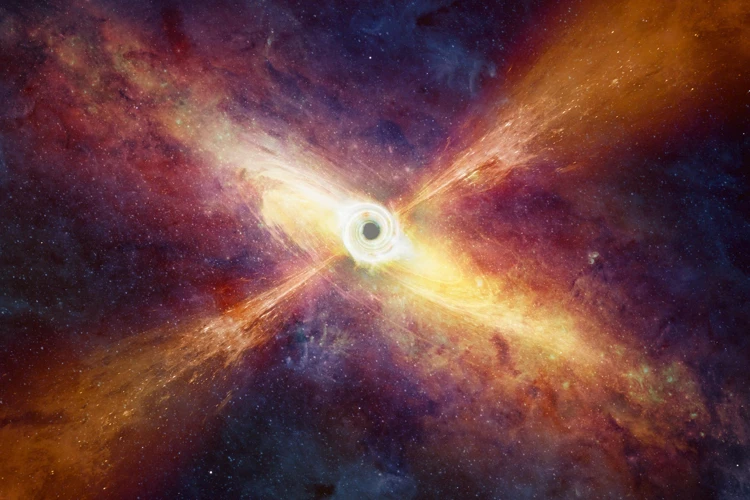
The ancient Egyptians attributed immense significance to the cosmos, believing it played a fundamental role in shaping their lives and the world around them. In their view, the cosmos was a reflection of the divine order and a source of immense power. It was widely believed that the gods and goddesses resided in the heavens, and their actions influenced the fate and destiny of humanity. The Egyptians saw the cosmos as a complex web of interconnected forces, with celestial bodies such as the sun, moon, and stars serving as vessels for divine energy. Understanding and aligning with these cosmic forces was considered crucial for maintaining harmony and prosperity in both the earthly and spiritual realms. The cosmos was seen as a cosmic clock, with the movements and alignments of celestial bodies serving as an intricate celestial language that communicated messages from the gods. By studying the cosmos and interpreting its messages, the ancient Egyptians sought to gain insight into the divine will, predict future events, and influence everyday life. It was through their profound connection to the cosmos that the Egyptians sought to navigate the complexities of existence and explore the mysteries of the universe.
The Story of Creation
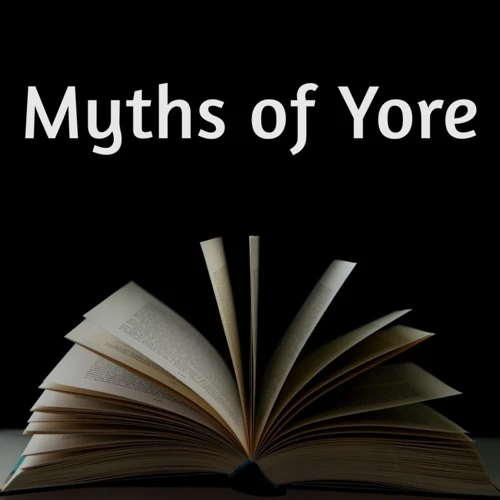
The ancient Egyptians had a rich and fascinating story of creation that shaped their cosmological beliefs. According to their mythology, there were different versions, each originating from different city centers in Egypt. One popular creation myth was “The Word of Ptah,” which claimed that the world came into existence through Ptah’s utterance. In this myth, Ptah, the great god of Memphis, spoke the words and concepts of creation, and everything came to be through his divine power. Another myth, known as “The Ennead of Heliopolis,” centered around the sun god Atum, who created the world by masturbating and spitting out Shu (air) and Tefnut (moisture). These two deities went on to create other divinities and life. In “The Ogdoad of Hermopolis,” the world was believed to have emerged from the primordial state of chaos, personified by four pairs of deities representing male and female forces. Each deity represented an aspect of the natural world, such as water or air. These stories of creation highlight the Egyptians’ deep reverence for the cosmic forces that shaped their existence and provided them with a sense of order and purpose in the universe.
1. The Word of Ptah
The Word of Ptah: Creation through Divine Utterance. According to ancient Egyptian mythology, the creation of the world began with the powerful utterance of Ptah, the creator god of Memphis. Ptah was believed to have pronounced the divine words that brought the cosmos into existence. The Egyptians believed that his words were not mere vocalizations but held the power of creation itself. Ptah’s words embodied the concepts of thought, knowledge, and understanding, and through his utterance, he formed the universe and everything within it. The creation story associated with Ptah emphasizes the power of language and the spoken word in shaping reality. This belief in the potency of words and their connection to creation is a remarkable aspect of ancient Egyptian cosmic beliefs. The profound significance placed on the spoken word by the ancient Egyptians can be seen in their intricate funerary texts, such as the Pyramid Texts and the Book of the Dead, which were believed to guide the deceased through the afterlife. These texts contained chants, spells, and invocations, emphasizing the importance of using the correct words and pronunciation to ensure a successful journey in the next life. The significance of Ptah’s divine utterance in the creation story reflects the ancient Egyptian understanding of the power of language and the spoken word in shaping their perception of the cosmos and their place within it.
2. The Ennead of Heliopolis
The Ennead of Heliopolis was a prominent group of nine deities worshipped in ancient Egyptian cosmology. Heliopolis, known as “Iunu” in ancient Egyptian, was a significant religious center where the sun god Ra held great importance. The Ennead consisted of Ra, who represented the sun and its life-giving energy, as well as his offspring and other deities associated with creation and the cosmic order. At the center of the Ennead was Atum, the self-created creator god, from whom all life and existence originated. He was believed to have emerged from the primeval waters of chaos and created the world through his divine will. The other members of the Ennead included Shu (god of air and sunlight), Tefnut (goddess of moisture and rain), Geb (god of the earth), Nut (goddess of the sky), Osiris (god of the underworld and fertility), Isis (goddess of magic and wisdom), Seth (god of chaos and desert), and Nephthys (goddess of mourning and protection). Each deity within the Ennead played a distinct role in maintaining cosmic balance and order. They were intertwined in a complex web of relationships and interactions, reflecting the interconnectedness of elements in the universe. The Ennead of Heliopolis served as a cornerstone of Egyptian cosmology, embodying the creative and generative forces that shaped the world. Their worship and reverence were central to the religious and cultural practices of ancient Egypt, demonstrating the profound impact of cosmic beliefs on the civilization’s worldview and rituals. (Source: /mysterious-astronomical-knowledge-mayans/)
3. The Ogdoad of Hermopolis
According to the cosmological beliefs of ancient Egypt, the Ogdoad of Hermopolis played a significant role in their understanding of the cosmos. The Ogdoad was a grouping of eight primordial deities, consisting of four male and four female divine beings. These deities were believed to exist before the creation of the world and were associated with the abyssal waters of Nun, which represented chaos and formlessness. The male deities were represented as frogs (Amun, Nun, Heh, and Kek), while the female deities were symbolized as cobras (Amunet, Naunet, Hauhet, and Kauket).
The Ogdoad represented the balance between chaos and order, as well as the harmonious interaction of opposing forces. They were seen as the ultimate cosmic forces, responsible for the creation and continuation of the world. The Ogdoad of Hermopolis were believed to have contributed to the creation of the universe through their interactions and unions. They were considered the primordial forces that set the stage for the emergence of other deities and the establishment of the divine order.
The Ogdoad’s significance extended beyond their role in creation. They were also associated with the cycles of the sun and the annual flood of the Nile, which were crucial elements in the agricultural and societal well-being of ancient Egypt. The Ogdoad of Hermopolis served as a reminder of the delicate balance and interconnectedness of cosmic forces in the Egyptian worldview.
The concept of the Ogdoad of Hermopolis is a testament to the sophisticated cosmological understanding of the ancient Egyptians. It reflects their profound observation of the natural world and its correlation with divine forces. The study of ancient Egyptian cosmology not only provides insights into their worldview but also contributes to our broader understanding of the development of early religious and philosophical thought. To delve deeper into the significance of astronomy in ancient Greek philosophy, please follow this link.
Celestial Entities
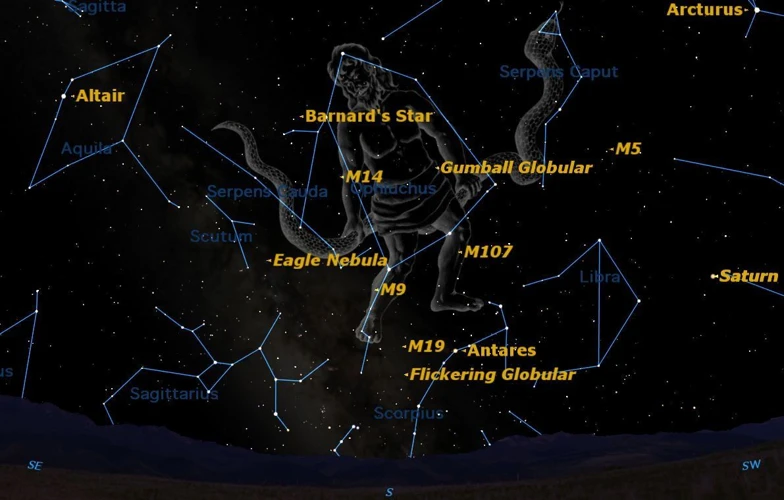
The ancient Egyptians held a deep reverence for celestial entities, considering them as powerful deities and essential components of their cosmic beliefs. Among these celestial beings, the most prominent was the Sun God, Ra. Ra was believed to be the ruler of the gods and the creator of all life. His radiant rays provided light, warmth, and life-giving energy to the world. Another significant celestial entity was the Moon God, Thoth. Thoth was associated with wisdom, magic, and writing. The Egyptians believed that Thoth regulated the cycles of the moon and governed the flow of time. The Sky Goddess, Nut, was also highly revered. Nut was envisioned as an arched canopy above the Earth, with her body adorned with stars. She was both the mother of the gods and the protector of the deceased. These celestial entities played a vital role in the mythology, rituals, and daily lives of the ancient Egyptians, symbolizing the power and beauty of the cosmos and serving as a connection between the earthly and divine realms.
1. The Sun God Ra
The Sun God Ra held utmost significance in the ancient Egyptian pantheon. Ra was believed to be the creator of the world and the ruler of both the celestial and earthly realms. As the sun deity, he was associated with light, heat, and life-giving energy. The ancient Egyptians saw Ra as the driving force behind the cycles of day and night, and his journey across the sky was seen as a symbol of rebirth and renewal. According to Egyptian mythology, Ra was born each morning and traveled through the sky in his solar barque, bringing light and warmth to the world. At night, Ra descended into the underworld, where he battled the forces of chaos and darkness. The rising and setting of the sun was seen as a representation of this eternal battle between light and darkness. Ra was often depicted as a falcon-headed deity or as a sun disk with a serpent encircling it, symbolizing his power and authority. The ancient Egyptians worshipped Ra and offered prayers and offerings to ensure his continued presence and blessings. The temples dedicated to Ra, such as the famous Temple of Karnak, were grand structures designed to honor and venerate the sun god. The cult of Ra played a vital role in Egyptian society, and his worship had a significant impact on daily life, religious rituals, and even political power. The knowledge and reverence for the Sun God Ra were deeply ingrained in the fabric of ancient Egyptian culture, reflecting their profound understanding of the cosmos and its divine inhabitants.
2. The Moon God Thoth
Thoth, the Moon God, held a significant position in the pantheon of ancient Egyptian deities. Often depicted as an ibis-headed man or a baboon, Thoth was associated with wisdom, knowledge, and writing. He was considered the divine scribe and the keeper of the lunar cycles. The ancient Egyptians believed that Thoth’s influence extended beyond the physical moon, as he was also associated with the measurement of time and the regulation of the calendar. Thoth’s role in the cosmic beliefs of ancient Egypt was vital, as he represented the connection between the celestial realm and human affairs. His association with knowledge and writing made him the patron deity of scribes, who were responsible for recording astronomical observations and rituals. Thoth’s lunar association tied him closely to the cycles of life and death, as well as the ebb and flow of the Nile River, which was crucial for the agricultural prosperity of Egypt. The worship of Thoth and the understanding of lunar cycles played a significant role in the religious and societal practices of the ancient Egyptians, reinforcing the interconnectedness of the celestial and earthly realms. To learn more about the influence of ancient Persian astronomy, visit our article on stargazing in ancient Persian astronomy.
3. The Sky Goddess Nut
In ancient Egyptian mythology, Nut was revered as the goddess of the sky. She was considered one of the most important and powerful cosmic deities, representing the overarching celestial realm that encompassed all of creation. Nut was often depicted as a woman arched over the Earth, her body adorned with stars and her skin as blue as the heavens. Her presence symbolized the vastness and infinite nature of the sky. The Egyptians believed that Nut swallowed the sun each evening, only to give birth to it again each morning, linking her to the daily cycle of day and night. This ritual of her swallowing and rebirth was seen as a metaphorical representation of the eternal renewal and rejuvenation of life. Nut was also associated with the concept of protection and served as a guardian deity, shielding the Earth and its inhabitants from chaos and darkness. Her presence provided a sense of stability and order to the cosmos. The ancient Egyptians held Nut in high regard and believed that by invoking her, they could gain her favor and ensure not only a harmonious existence but also a safe passage into the afterlife. Nut’s role as the sky goddess exemplified the profound reverence and understanding that the ancient Egyptians had for the cosmic forces that governed their lives.
Significance of Astrology
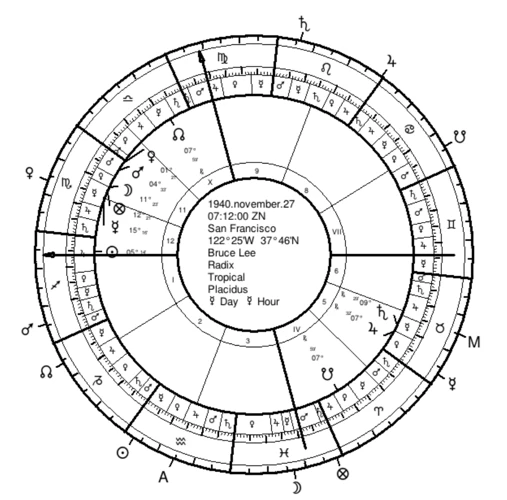
Astrology held immense significance in ancient Egyptian civilization, permeating various aspects of their society and daily life. Egyptians believed that the positions and movements of celestial bodies could reveal divine will and influence human destiny. Understanding the Divine Will: Astrology provided a means for the Egyptians to interpret the messages and intentions of the gods and goddesses. By observing the celestial alignments, they sought to gain insight and guidance on important matters such as governance, agriculture, and personal decisions. Predicting the Future: The Egyptians relied on astrology to foresee future events, both on an individual and societal level. They believed that the positions of the stars could offer glimpses into forthcoming challenges and opportunities, guiding them in their decision-making processes. Influencing Everyday Life: Astrology had a profound impact on Egyptian society, influencing various aspects of everyday life, such as naming conventions, marriage ceremonies, and even the construction of buildings aligned with the stars. The intricate connection between astrology and the lives of the Egyptians showcased their ardent belief in the power of celestial forces and their desire to harmonize with the cosmic energies surrounding them.
1. Understanding the Divine Will
Understanding the Divine Will was a primary objective of the ancient Egyptians when it came to their cosmic beliefs. They believed that the movements and positions of celestial entities held hidden messages and insights into the intentions of the gods. To decipher these divine communications, the Egyptians developed deep knowledge of astrology and celestial symbolism. Astrological observations were meticulously recorded and analyzed to interpret the divine messages embedded within the cosmic events. The alignment of stars, the phases of the moon, and the movement of planets were all carefully observed and interpreted. This understanding of the divine will provided guidance for important decisions, such as when to undertake significant endeavors or how to navigate challenges. It allowed the Egyptians to align their actions with the cosmic forces and thus garner favor from the gods. Through their profound study and comprehension of the cosmos, the ancient Egyptians sought to connect with the divine, ensuring their lives were in harmony with the will of the gods and the cosmic order.
2. Predicting the Future
One of the significant aspects of astrology in ancient Egyptian civilization was its role in predicting the future. Egyptian astrologers and priests closely observed the movements of celestial bodies, believing that they held valuable insights into what lay ahead. The positioning of the stars and planets was thought to reveal potential events, both on an individual and societal level. For example, the appearance of certain celestial configurations was believed to foretell the outcome of battles or the success of agricultural harvests. The alignment of stars and planets at the time of a person’s birth was seen as a blueprint for their life, providing clues about their personality traits, strengths, and challenges they may encounter. By connecting these cosmic patterns with earthly events, the Egyptians sought to anticipate and prepare for future circumstances. Astrological predictions guided decisions related to agriculture, governance, and personal matters, serving as a source of guidance and inspiration for individuals and society as a whole. While astrology in ancient Egypt had a practical purpose in predicting the future, it was also deeply intertwined with their spiritual beliefs, providing a sense of connection to the divine and a belief in a higher plan for the universe.
3. Influencing Everyday Life
In Ancient Egypt, the belief in the influence of the cosmos on everyday life was pervasive. The Egyptians believed that by understanding and aligning with celestial forces, they could actively shape their daily experiences and outcomes. This belief manifested in various practices and rituals aimed at harnessing the power of the cosmos. One such practice was the use of amulets and talismans adorned with celestial symbols, such as the sun disk or the crescent moon, to attract favorable cosmic energy and ward off negative influences. Astrologers and priests played a crucial role in interpreting celestial events and providing guidance to individuals seeking to navigate their lives. From determining auspicious times for important activities to offering advice on career choices, relationships, and even medical treatments, the Egyptians turned to astrology to make informed decisions and gain an advantage in various aspects of life. Rituals were also performed to invoke specific cosmic forces and seek their blessings. For example, during the annual flooding of the Nile, a ceremony known as the “Turning of the Hapi” was conducted to ensure a bountiful harvest. By aligning their actions with the cosmic rhythms, the Egyptians believed they could maintain balance, prosperity, and protection in their everyday lives. The cosmos wasn’t simply an abstract concept to the ancient Egyptians; it was a tangible force that they actively engaged with to shape their reality.
Temples and Rituals
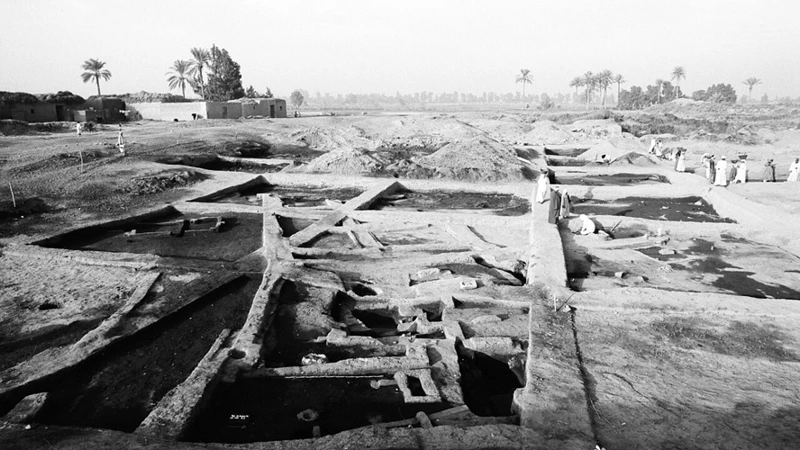
The temples of ancient Egypt served as sacred spaces where the cosmic beliefs of the civilization were embodied and practiced. These magnificent structures were meticulously designed and built to align with the celestial movements and energies. Within these temples, rituals were performed to honor the gods and goddesses associated with celestial entities. One such ritual was the alignment ceremony, where priests would carefully observe the positions of the celestial bodies and adjust the orientation of the temple accordingly. This alignment was believed to harmonize the earthly and celestial realms, allowing for a direct and powerful connection to the divine. Additionally, astrological observations were conducted within the temples to interpret the messages conveyed by the cosmos. These observations were integral in guiding the religious practices and daily affairs of the ancient Egyptians. The temples also served as a place of worship, where offerings and prayers were made to the gods, seeking their favor and protection. These rituals and practices formed a key component of the Egyptian way of life, demonstrating the profound reverence and reliance they had on the cosmic forces that governed their existence.
1. Rituals for Celestial Alignment
Rituals for celestial alignment played a crucial role in the religious practices of the ancient Egyptians. They believed that by aligning themselves with specific celestial events, they could establish a connection with the divine and ensure the continued harmony of the universe. One such ritual was the “Heb Sed” or “Jubilee” ceremony, which was conducted to rejuvenate the power and vitality of the pharaoh after 30 years of rule. During this ritual, the pharaoh would perform a series of physical and symbolic acts, including running laps around a specially constructed track. The alignment of the track with certain celestial bodies, such as the rise of Sirius, was of utmost importance, as it was believed to enhance the efficacy of the ceremony. Another significant ritual was the “Feast of the Valley,” an annual event where the deceased pharaoh and other revered ancestors were honored. This ceremony involved processions of sacred boats, grand offerings, and prayers, all conducted in alignment with specific celestial events, particularly the rise of certain stars. These rituals for celestial alignment were not only religious but also served as a means to establish a cosmic balance and reaffirm the connection between the earthly and divine realms. Through these carefully orchestrated ceremonies, the ancient Egyptians sought to harness the power of the cosmos and ensure the continued prosperity and well-being of their civilization.
2. Astrological Observations
Astrological observations held great significance in ancient Egyptian society. The Egyptians meticulously studied the celestial movements and positions of the stars, planets, and other heavenly bodies, believing that they held profound insights and predictions about the future. They developed a comprehensive system of astrology that involved mapping the positions of celestial bodies and interpreting their significance based on intricate calculations and symbols. Astrology was not limited to predicting individual destinies; it also played a crucial role in guiding important decisions at the societal level. For instance, the pharaohs would consult with court astrologers before embarking on military campaigns or making significant administrative decisions. Astrological observations were also used to determine the most auspicious times for various religious ceremonies and agricultural activities. The ancient Egyptians believed that by understanding and aligning themselves with the celestial patterns, they could harness the positive energies and navigate the challenges that the future held. Astrological observations provided them with a framework for understanding the cyclical nature of life, as well as the interconnectedness of the human realm with the celestial realm. The wealth of knowledge accumulated through astrological observations allowed the ancient Egyptians to gain insights into the mysteries of the universe and to shape their lives accordingly.
3. Divine Worship
In ancient Egyptian civilization, the worship of celestial entities was an integral part of their religious practices. The Egyptians revered a multitude of gods and goddesses, many of whom were associated with specific celestial bodies. These deities served as intermediaries between the mortal world and the divine realm, and their worship was believed to bring blessings, protection, and prosperity.
The sun god Ra, one of the most important deities in the Egyptian pantheon, was worshipped as the creator and sustainer of life. His powerful rays illuminated the world and ensured fertility and abundance. Temples dedicated to Ra were built across Egypt, where priests conducted elaborate rituals and ceremonies to honor and seek the favor of the sun god.
Thoth, the moon god, was highly revered for his wisdom, knowledge, and protection. He was associated with writing, magic, and judgment. The ancient Egyptians believed that Thoth regulated the lunar cycles and controlled the flow of time. Worship of Thoth involved offerings and rituals performed in his honor, particularly during lunar events or celestial alignments.
Nut, the sky goddess, was also venerated by the Egyptians. She was seen as the protective mother of the gods and was often depicted arching over the Earth with her body covered in stars. Nut represented the vastness of the sky and its connection to the celestial realm. Worshippers sought her blessings for protection, fertility, and divine guidance.
Divine worship was conducted by priests and priestesses in temples dedicated to specific deities. These rituals involved offerings, hymns, prayers, and sacred dances. The faithful believed that by participating in these rituals, they could establish a direct connection with the gods, seek their favor, and ensure their well-being in both this life and the afterlife.
Divine worship in ancient Egypt was not only a religious obligation but also a way to maintain harmony between the mortal and divine realms. It was a means of expressing gratitude, seeking divine assistance, and showing reverence to the celestial entities that were believed to shape the course of human existence.
Legacy and Historical Impact
The legacy of ancient Egyptian cosmic beliefs is undeniable, as their impact reverberates throughout history. The unparalleled sophistication and depth of their understanding of the cosmos shaped not only their own civilization but also influenced countless cultures that followed. The concepts of celestial alignment, astrology, and the worship of gods and goddesses in relation to the cosmos became intertwined with the fabric of Egyptian society. This enduring legacy is reflected in their architectural marvels, such as the pyramids and temples, which were meticulously aligned with celestial bodies and served as centers for ritual and worship. The Egyptians’ meticulous observation of the movements and cycles of the sun, moon, and stars laid the foundation for the development of astronomy, navigation, and timekeeping systems. Their astronomical knowledge and calculations were highly advanced for their time, setting the stage for further astronomical discoveries in civilizations such as ancient Greece, Persia, and the Mayans. The belief in a divine cosmic order influenced the social structure and governance of ancient Egypt, as Pharaohs were seen as the link between the earthly realm and the celestial realm. This divine connection bolstered the Pharaoh’s authority and shaped the religious and political practices of the civilization. The profound impact of ancient Egyptian cosmic beliefs endures to this day, as we continue to be fascinated by their extraordinary achievements and the insights they provide into the mysteries of the cosmos.
Conclusion
In conclusion, the cosmic beliefs of the ancient Egyptian civilization were deeply ingrained in every aspect of their society. The role of the cosmos was foundational to their understanding of the world and their place within it. From the creation myths that explained the origins of the universe to the worship of celestial entities, the Egyptians saw the cosmos as a source of divine power and wisdom. Astrology played a significant role in their lives as they sought to understand the divine will, predict the future, and influence everyday events. The construction of temples and performance of rituals allowed them to connect with the cosmic forces and seek favor from the gods. The legacy of their cosmic beliefs can still be felt today, as their cultural and religious practices continue to inspire awe and fascination. The ancient Egyptians’ profound connection to the cosmos serves as a testament to their intellectual and spiritual prowess. By embracing the wonders of the universe, they left an indelible mark on history and remind us of the enduring mysteries of the cosmos.
Frequently Asked Questions
1. Why did the ancient Egyptians place such importance on the cosmos?
The ancient Egyptians believed that the cosmos was a divine entity and that its movements and alignments held significant power and influence over their lives. They saw the cosmos as a reflection of the divine order and believed that by understanding and aligning with its forces, they could maintain harmony and prosperity.
2. How did the ancient Egyptians believe the cosmos was created?
The ancient Egyptians had different creation myths, but two prominent ones were the Word of Ptah and the Ennead of Heliopolis. The Word of Ptah myth states that Ptah, the creator deity, spoke the world into existence. The Ennead of Heliopolis myth tells of Atum, the first god, who emerged from the primeval waters and created other gods and the world.
3. Who were the celestial entities worshipped by the ancient Egyptians?
The ancient Egyptians worshipped various celestial entities, including the sun god Ra, the moon god Thoth, and the sky goddess Nut. These deities represented different aspects of the cosmos and played key roles in Egyptian mythology and religious practices.
4. How did the ancient Egyptians use astrology?
Astrology played a significant role in ancient Egyptian society. They believed that studying the movements and alignments of celestial bodies allowed them to understand the divine will, predict future events, and influence their everyday lives. Astrology guided decisions related to agriculture, rulership, and even personal matters such as health and relationships.
5. What were some rituals associated with celestial alignment?
Ancient Egyptians performed rituals to align themselves with the cosmos. They would conduct ceremonies during specific celestial events, such as the annual flooding of the Nile, the rising of the star Sirius, or the equinoxes and solstices. These rituals aimed to appease the gods and ensure the continuity of divine blessings.
6. How did ancient Egyptians observe and record astronomical phenomena?
Ancient Egyptians meticulously observed and recorded astronomical phenomena. They built structures such as obelisks and temples to align with celestial bodies and mark significant events. Astronomical records were kept in texts such as the Egyptian Calendar and the Cairo Calendar, which detailed the movement of celestial bodies and the significance of specific dates.
7. Did the ancient Egyptians worship the sun?
Yes, the ancient Egyptians had a deep reverence for the sun. They worshipped the sun god Ra as one of the most important deities in their pantheon. Ra represented the power and life-giving energy of the sun, and his worship was central to Egyptian religious practices.
8. How did the ancient Egyptians view the moon?
The ancient Egyptians regarded the moon as a celestial body with its own power and influence. They worshipped the moon god Thoth, who was associated with wisdom, magic, and writing. The phases of the moon were also closely observed and held significance in religious rituals and agricultural practices.
9. How did astrology impact everyday life in ancient Egypt?
Astrology had a profound impact on everyday life in ancient Egypt. It guided decisions related to planting and harvesting crops, predicting and preparing for natural disasters, selecting auspicious dates for important events, and even determining personal attributes and compatibility.
10. What is the legacy of ancient Egyptian cosmic beliefs?
The cosmic beliefs of ancient Egypt have left a lasting legacy. The practices and knowledge developed by the ancient Egyptians influenced later civilizations in areas such as astrology, astronomy, architecture, and religious beliefs. The immense monuments and temples they built to align with the cosmos continue to captivate and inspire awe in visitors today.

